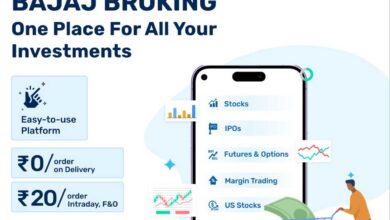
In today’s fast-paced world, retailers and brands are constantly exploring new ways to connect with customers. One method that’s gaining traction is multi-channel e-commerce, a model that allows businesses to offer their products on various online platforms.
This isn’t just about throwing your products up on different websites and hoping for the best. It’s about creating a cohesive, integrated experience for customers, no matter where they shop. Let’s look at the nitty-gritty of what makes this approach a game-changer for modern commerce.
Understanding the basics: What is multi-channel e-commerce?
Imagine walking into a mall where every store knows your name, likes, and past purchases. That’s sort of what multi-channel e-commerce aims to do with businesses in the digital world. This approach allows businesses to list their products across different marketplaces, social media platforms, and their websites.
But the trick isn’t just to be present on these channels; it’s to provide a seamless experience that makes shoppers feel recognized and valued, no matter how they come to do business. The beauty of this strategy is that it opens up a world of possibilities for businesses to increase their reach and revenue.
The benefits of selling on various digital platforms
Picture this: a customer stumbles upon your product while scrolling through social media. Later that day, they see it again on a popular online marketplace. This repeated exposure is no coincidence; it’s a strategic move enabled by multi-channel ecommerce.
By showcasing your products at multiple online venues, you’re increasing visibility and reinforcing your brand in the consumer’s mind. But the perks don’t stop there. This approach also offers customers convenience because they can purchase your products where they feel most comfortable, whether that’s directly from your website or through their favorite shopping app.
Common challenges retailers face in multi-channel retailing
Despite the obvious upsides, multi-channel retailing isn’t without its challenges. Picture a juggler, each ball representing a different sales channel.
Now imagine if one ball is a different size or if the juggler suddenly gets an extra ball to keep in the air. This is similar to the challenges multi-channel retailers face, such as syncing inventory across platforms, providing consistent customer service, and maintaining a uniform brand identity. If managed poorly, these challenges can lead to customer frustration, out-of-stock dilemmas, and a diluted brand presence.
However deploying the right strategy and tools can help retailers master multi-channel selling, keeping all balls in the air gracefully.
The role of seamless integration in enhancing the user experience
At the heart of successful multi-channel ecommerce is integration — not just of the systems and technologies that manage sales, but of the entire customer experience.
Seamless integration means that whether a customer is shopping through a mobile app, a social media platform, or an online marketplace, their experience should be consistent and cohesive.
Smooth integration reduces friction, for example by ensuring that a product a customer saw advertised on one channel is available for sale on another. It spares the customer the frustration of navigating between different platforms that feel disjointed.
Ultimately, this level of synchronization is what transforms a series of sales channels into a harmonious multi-channel ecosystem.
Web design: Bridging the gap between function and aesthetics
No matter where you’re selling, the systems and platforms should not only function smoothly but also delight the senses. Web design is important here. It’s about more than just making things look good; it’s about creating an intuitive, user-friendly environment that draws customers in and guides them effortlessly through to purchase. Good design communicates brand identity and values, instills trust, and showcases products in the best light.
In multi-channel ecommerce where consistency is key, design becomes the visual thread that weaves through each channel, creating a sense of familiarity and reliability for the customer.
Creating content that resonates with your multi-channel audience
Let’s talk content. As customers interact with brands across various touchpoints, content becomes the important thing. It’s one thing to draft a compelling description for your product; it’s another to tailor that message to resonate across different platforms.
A winning content strategy addresses platform-specific quirks and audience preferences while maintaining a clear voice and brand message.
For instance, the playful vibe of an Instagram post might not suit the more professional air of a LinkedIn profile. Recognizing these nuances and adapting your content accordingly is key to engaging with a diverse online audience.
At the end of the day, multi-channel e-commerce is like throwing a wider net into the vast ocean of online shopping opportunities. It’s about being where your customers are, understanding their needs, and offering them a shopping experience that’s satisfying no matter the route they take. By embracing the complexity and dynamism of selling across multiple digital platforms, businesses will not only be able to survive but thrive in the ever-expanding e-commerce universe.







